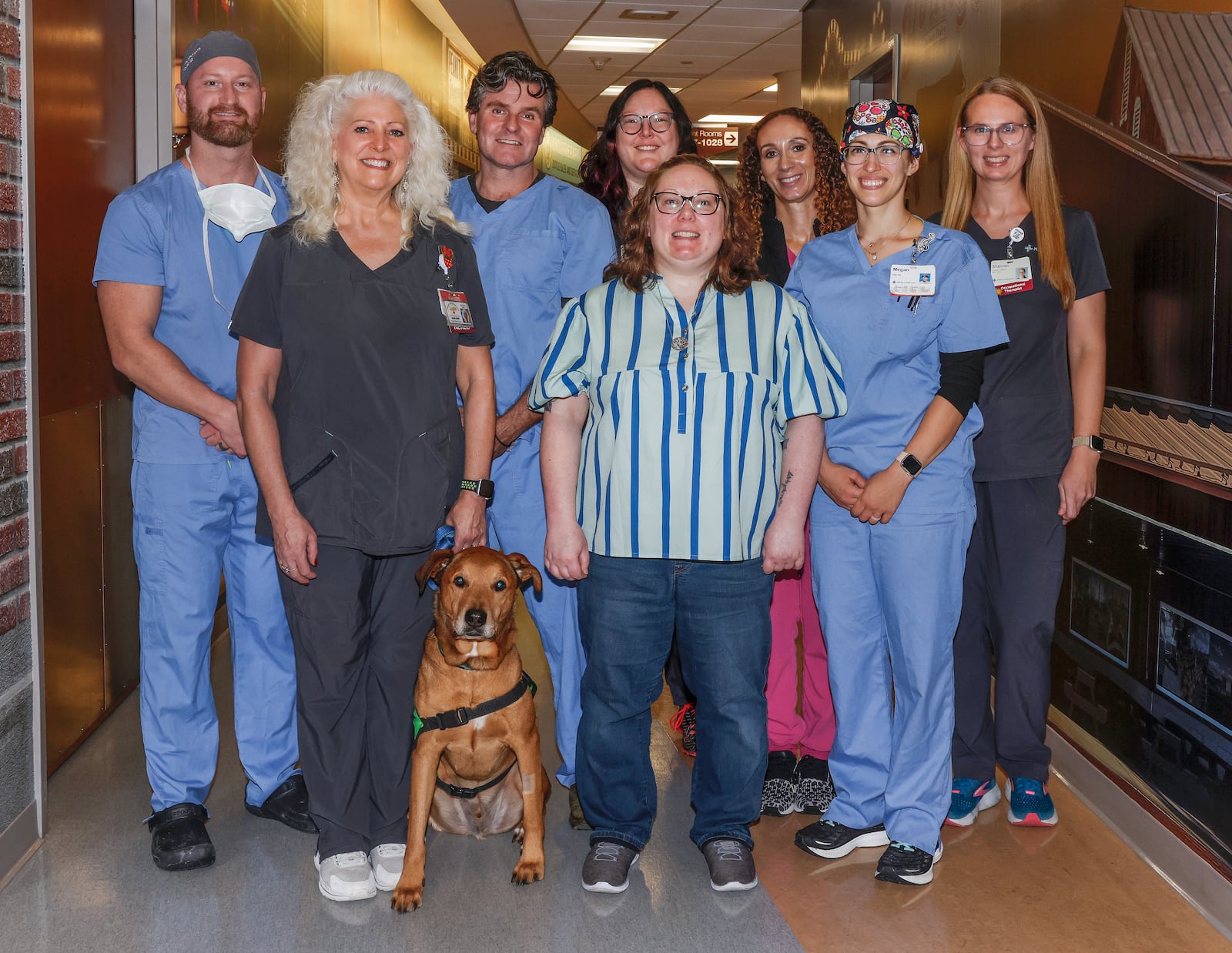“They saved my life,” Prince said of her care team. “I wouldn’t have been here in this state (without them).”
On Sept. 21, Prince returned home from the store and unloaded her groceries. After sitting down to text her sister, her head began to feel heavy and she became dizzy. After getting a hot flash, she laid on the wood floor to cool down.
Prince said she then tried to crawl to the kitchen tile “to cool down because I was so, so sweaty.” She removed her glasses because of the heat but became disoriented.
Prince couldn’t crawl because she kept tipping to the left side and her attempts to pull herself onto the couch were unsuccessful. She had put her phone on the floor but could not find it without her glasses, so she was unable to call her husband and son, who were at the Clark County Fairgrounds at a flea market.
Soon after, her husband and son returned home with Prince’s mother-in-law and “they said right away, ‘You had a stroke.’” They called an ambulance, which arrived quickly and transported Prince to the hospital, where she received Tenecteplase, which dissolves blood clots in certain blood vessels to treat acute ischemic stroke.
Dr. Jody Short, vascular and interventional neurologist, and his team then performed a thrombectomy, inserting a catheter in the groin and suctioning out an occluded brain blood vessel to restore blood flow to the brain, he said.
After imaging to see Prince’s heart, her care team learned that a prior infection that left a scab of sorts on her heart had broken off and caused a clot.
“I’m only 38 and usually that happens to IV drug users. I’m not,” Prince said. “And dental surgery, I didn’t have any. I was not on antibiotics. All the things that it was supposed to be to have this happen, I didn’t have.”
The national standard to administer TNK is within 60 minutes of arrival to the hospital but there is a four-and-a-half hour window from stroke onset, Chase Collins, director of neurosciences, said. A thrombectomy can be performed within 24 hours.
Stroke is the second-leading cause of death in Clark County and the third-leading in Champaign County.
The national average age of stroke has been steadily decreasing, Collins said, and that has been reflected in Springfield.
“It’s not an old person disease anymore,” he said.
To recognize a stroke, people can use the BEFAST test (Balance, Eyes, Face, Arms, Speech, Time). People should look for changes to their balance and coordination, changes to their vision, a drooping effect on their face, arms or limbs feeling weak or changes to their speech. If those symptoms are present, they should call 911 quickly.
Immediately after her stroke, Prince began rehabilitation. She benefitted from the hospital’s newly renovated Acute Rehabilitation Center, which is designed to look and feel like different areas of Springfield, with large scale photos of various businesses covering the walls and 10 interactive functional areas like a Groceryland market, Park National Bank ATM and counter, a front porch with outside and screen door and a menu and booths for Ridgewood Cafe.
Prince appreciated the realistic grocery shopping simulation, where she pushed a cart and made a grocery list.
Prince doesn’t remember a lot of her care team, something she said her sister told her is her brain protecting herself from the trauma of the situation, but she said she wishes she did remember all the people who saved her life.
The math and science teacher recently completed her outpatient therapy and is back at work part time. She still gets tired easily, and sometimes her left leg drags, but she said she’s “90% back to normal.”
Because of her experience, Prince said she is sharing things to look out for and to know in case of stroke.
“I didn’t know I was having a stroke, so that was just very alarming, that it can happen to anybody at any time,” Prince said.
She’s working on finding the rhythm of her “new life,” she said. For now, she’s grateful for her care team, her husband, Adrian, and her son, Andrew, and she’s working hard on an online course to get her master’s degree in educational leadership.
About the Author


